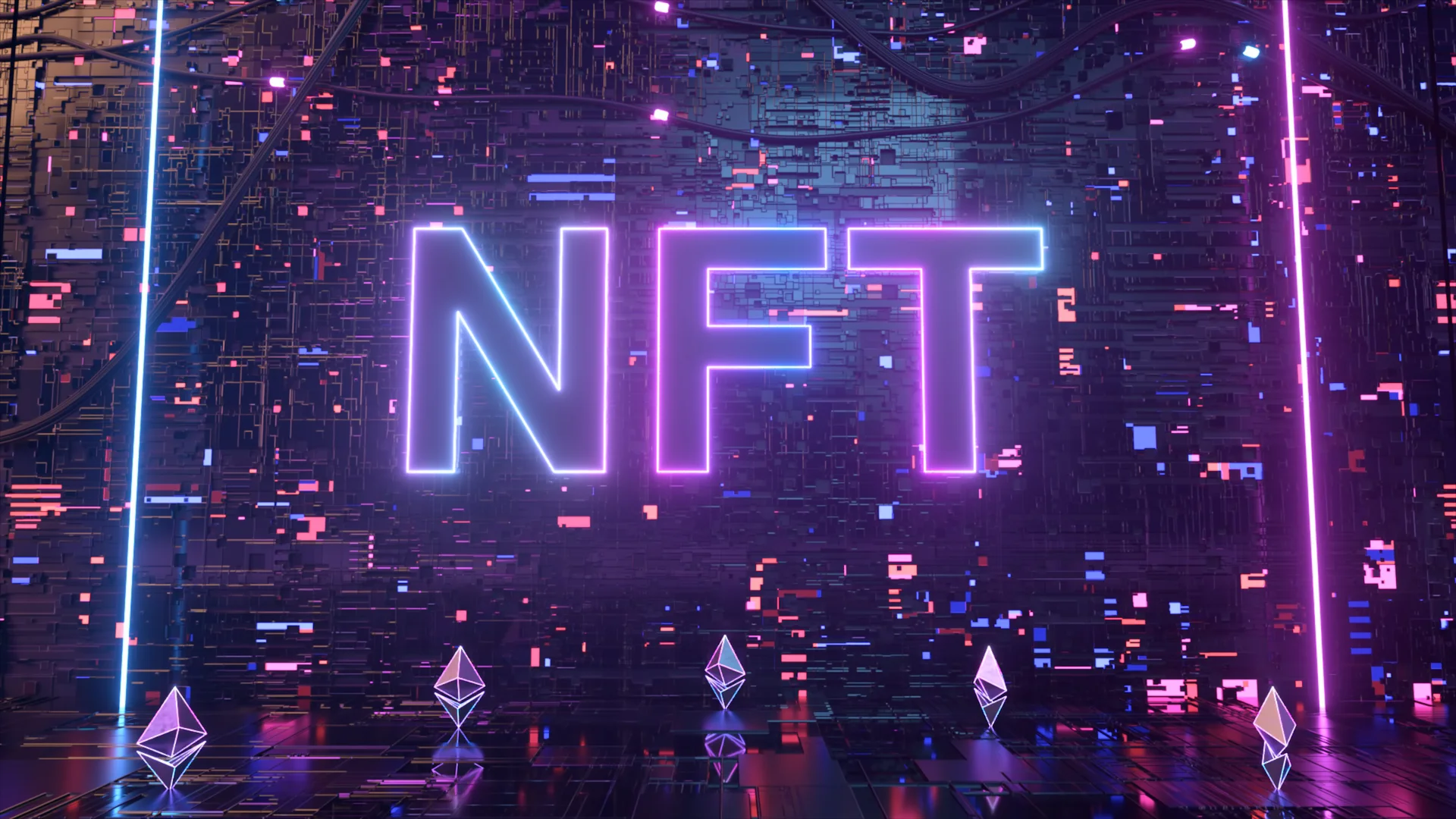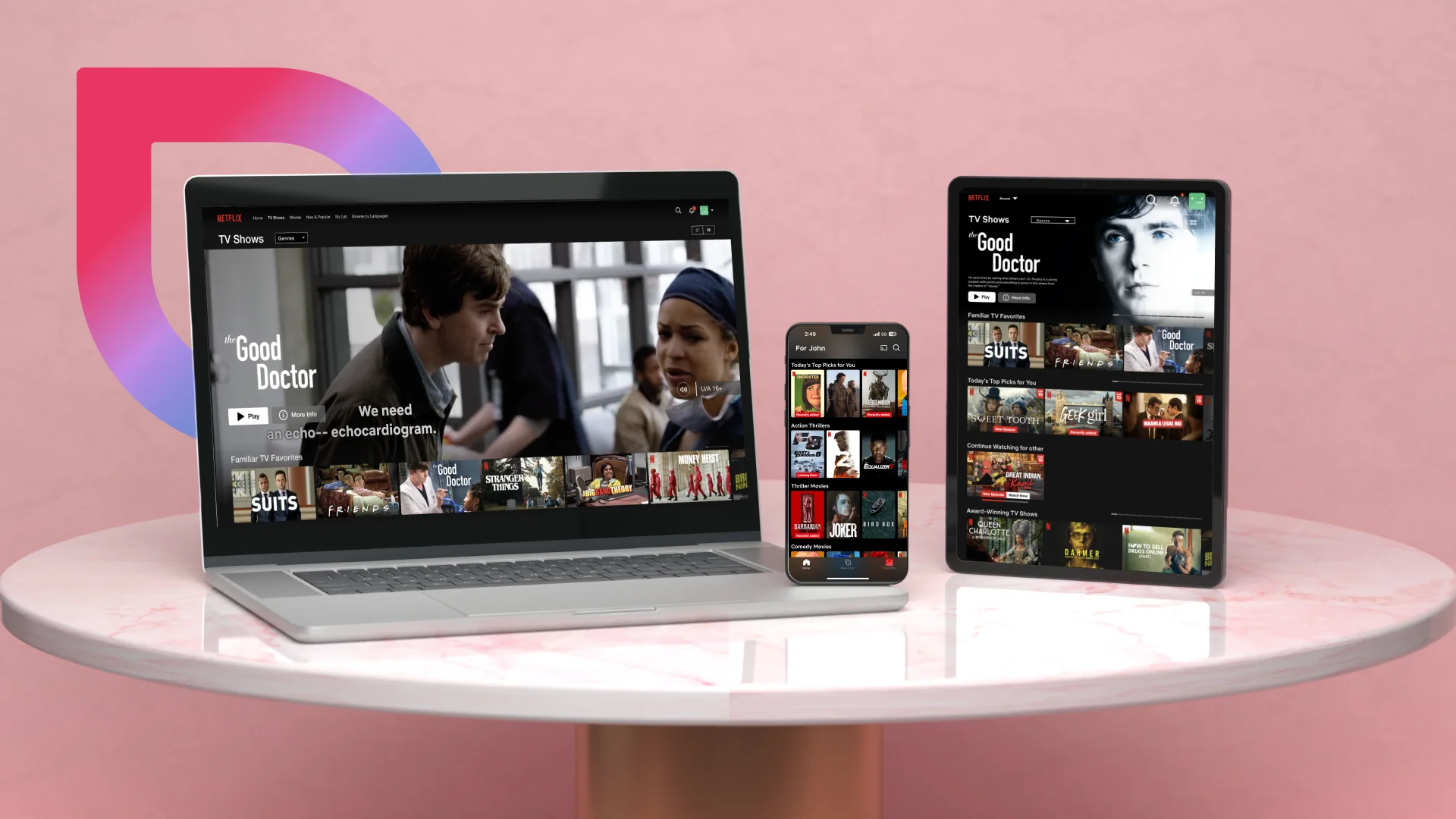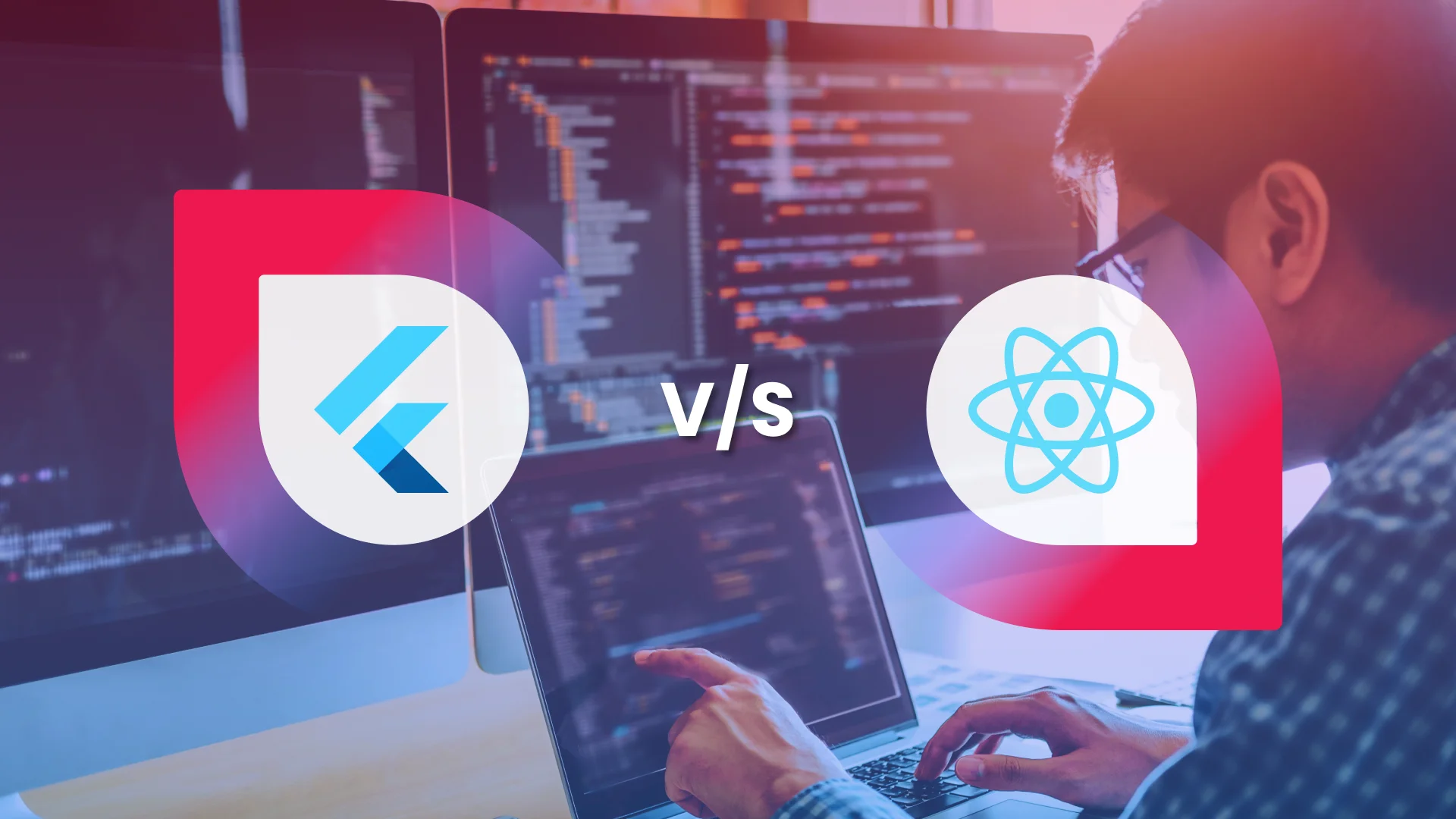A Complete Guide to NFT Marketplace Development
- Mobile
- January 23, 2023
The popularity of online marketplaces for digital collectibles is increasing day by day. If you also want to enter the market, you need to develop a marketplace on your own. We are already aware of Blockchain technology, different cryptocurrencies and many people use various marketplaces to purchase or sell products.
NFT (non-fungible token) is such a marketplace that works as a public Blockchain platform. Although this platform is still not fully mature, its rising popularity is why developers and entrepreneurs create such a marketplace these days.
If you are wondering how to develop an NFT marketplace app like OpenSea, read this blog. We have covered everything you should know while creating such a marketplace.
What is an NFT Marketplace?
It’s a platform that enables you to preserve and trade NFT or Non-Fungible Tokens easily. You can usually buy or auction these tokens at a fixed rate. You must have a crypto wallet to make transactions and store your tokens to use such a marketplace. OpenSea is a marketplace where you can buy or sell NFT artworks.
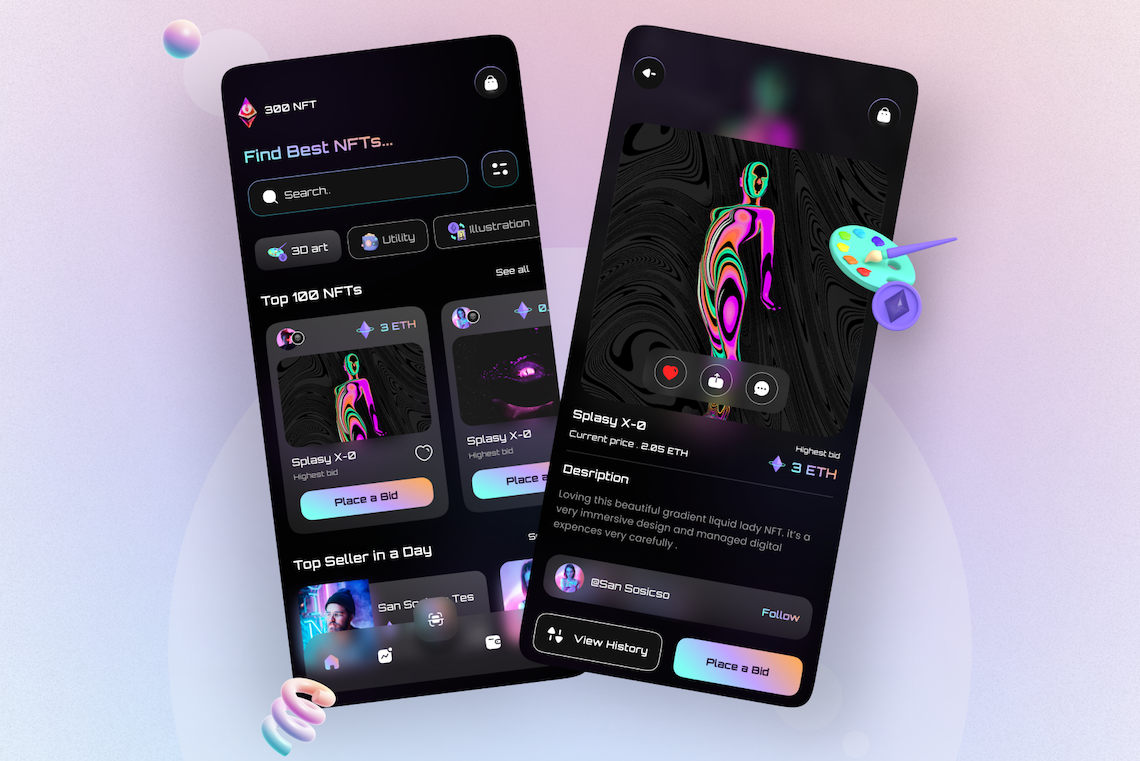
Source: NFT Marketplace App
An NFT marketplace allows users to build an account, upload digital artworks and make sales. Generally, niche marketplaces are higher in demand than standard ones, as they offer all that clients may need, specialize in selling some online artworks, and contain a specific target audience.
Recently, we have designed and developed a video NFT marketplace named AltairNFT, where users can collect and trade NFTs. It provides users the top quality live streaming recorded content and videos from the live sports, concerts, virtual events in multiple angles as NFTs.
The Architecture of an NFT Marketplace
NFTs are digital assets that are stored on a blockchain. It represents a unique item or piece of content and cannot be replicated or exchanged for something else. The architecture of NFTs is based on the underlying blockchain technology, which provides a secure and decentralized way to store and transfer digital assets.
NFT MetaData
NFTs often include metadata that provides additional information about the asset, such as its name, description, image, and other relevant details. This metadata is stored off-chain, typically on a decentralized storage platform like IPFS.
Digital Wallet
NFTs are stored in cryptocurrency wallets, which are digital wallets that allow users to manage their cryptocurrency assets. Users can buy, sell, and trade NFTs using their cryptocurrency wallets.
Blockchain Integration
Multiple types of blockchain networks can be availed to create a full-functioning NFT marketplace. These comprise public, private, consortium, and hybrid blockchain networks. The technology allows to store information related to NFTs and transactions occurring on the platform.
Smart Contract
NFTs are created through smart contracts, which are self-executing programs that run on the Ethereum blockchain. These smart contracts define the rules and conditions for the NFT, including its ownership, transferability, and other characteristics.
Token Minting
Minting NFTs are very necessary whether you allow NFTs with or without gas costs. The process of minting NFTs is about validating all the data that is garnered, building a new block, and recording it into the blockchain Ethereum, Binance Smart Chain, and other platforms that can be used for token minting.
IPFS (Interplanetary File System)
IPFS is a data storage system that is used to get rid of the power-consuming storage of digital assets with metadata on the blockchain.
Overall, the architecture of an NFT is designed to ensure its uniqueness, authenticity, and traceability, which are essential qualities for digital assets that are traded on a decentralized network.
How Does an NFT Marketplace Work?
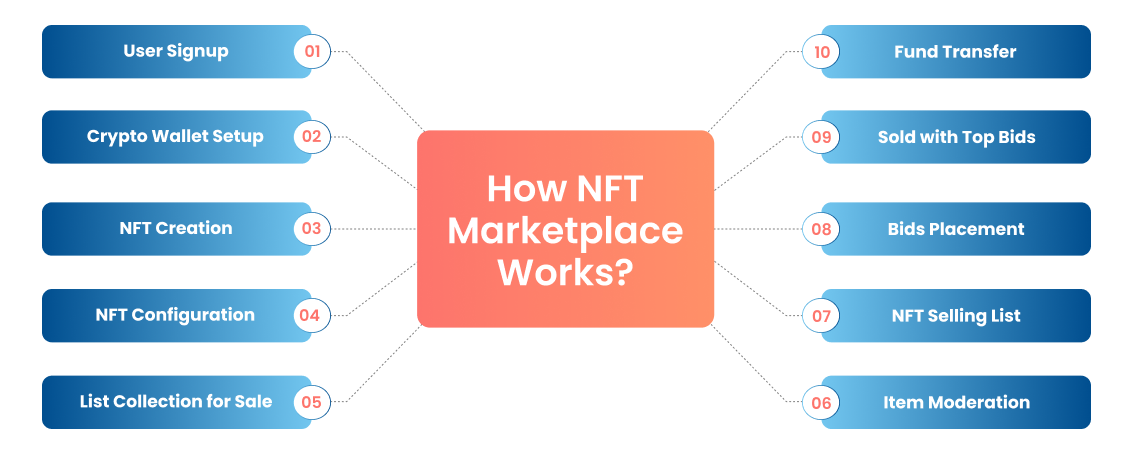
To use a marketplace, you should register and connect the crypto wallet to your account. Next, you need to follow some steps:
- Create an NFT and define all preferred parameters.
- List your digital goods for sale and wait for the completion of the moderation.
- Buyers put their bids when auctions occur.
- When auctions are complete, the marketplace transfers cryptocurrency and digital products.
An NFT marketplace utilizes particular transaction protocols known as smart contracts. These protocols regulate the connections between the seller and the buyer. Moreover, these smart contracts contain identifying data associated with an NFT. Hence, the process of buying and selling tokens becomes user-friendly and convenient.
Why Are NFTs Popular?
OpenSea is one of the most influential and popular NFT art marketplaces. It functions similarly to the eBay app. This marketplace allows users to sell or buy crypto products and NFTs the same as an online platform.
There are some statistical data that prove the popularity of NFT marketplaces like OpenSea. NFT’s market cap value has been increasing fast and went ten-fold between 2018 and 2021. In 2021, the worldwide turnover of NFT marketplaces was $11,300 million.
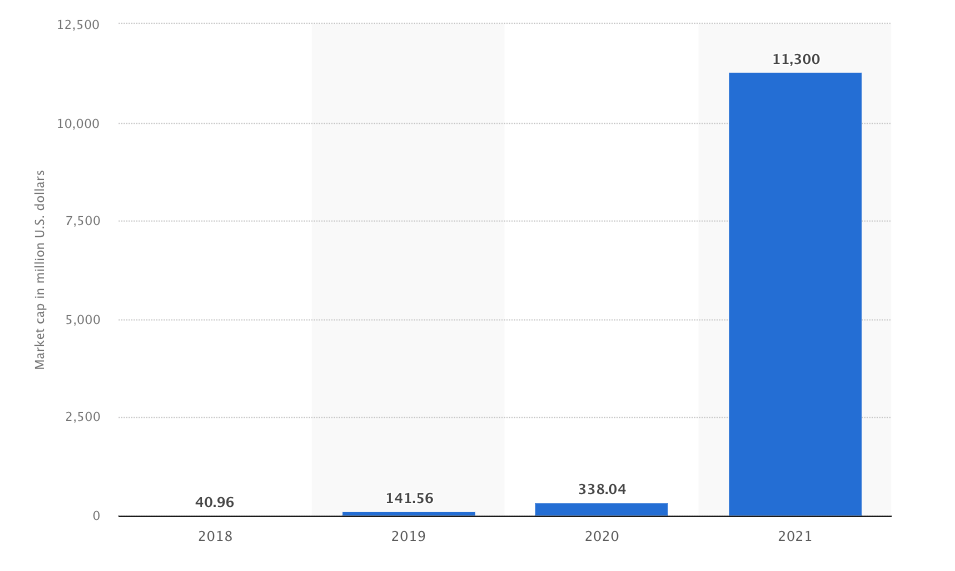
You can use the NFTs for showcasing the possession of file formats like GIFs, MP3, JPEGs, and more. The selling price of an NFT asset named Everyday: The First 5000 Days was $69 million in an auction in 2021. It’s a collection of artworks arranged in a collage.
All these stats and analytics prove that NFT marketplaces will be more in demand in the coming years. And introducing such a marketplace app makes sure a profitable Revenue Streaming Model in this competitive era.
Top Features to Include in an NFT Marketplace App
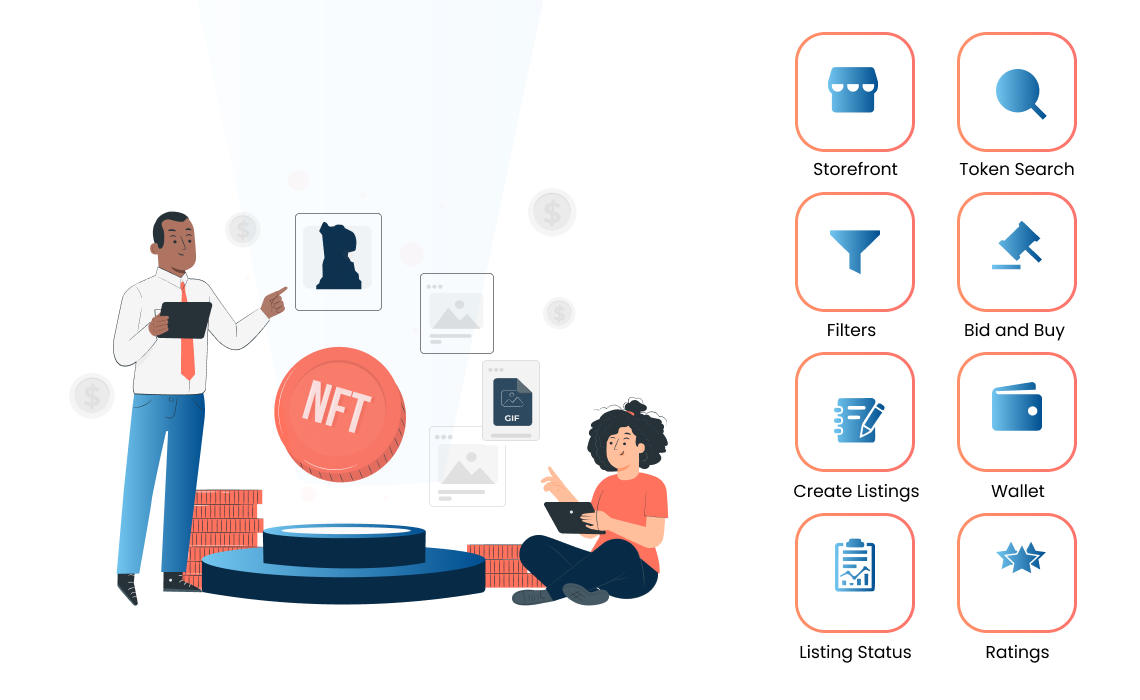
Here are some of the features that you can include to an NFT marketplace app:
1. Storefront
A thriving NFT marketplace usually has a storefront that works like a dashboard. It provides users with all data needed for an asset:
- Owners
- Bids
- Previews
- Value history
2. Advanced Token Search
Consumers should get complete information on products they need urgently, without effort. Your NFT marketplace app should contain every product arranged with some features (for example, art, images, music, videos, memes). Faster search boosts client satisfaction.
3. Filters
Using filters is highly beneficial. Moreover, it becomes easier to undergo a website. If you want to create an NFT marketplace platform for collectibles, add this feature. It lets users freely choose assets by category, payment method, due time, and listing status.
4. Bid and Buy
A marketplace must allow customers to buy and provide NFTs recorded on the platform. Their offers should include a bid validity date and enable them to see information on those offers’ current status.
5. Create Listings
Allow your consumers to create and send digital collectibles. Make sure they need minimum effort to do it. Please create a page where they can submit files, typing in the detailed product description. Information like tags, title, and description is necessary.
6. Wallet
Your NFT marketplace should contain a wallet that allows customers to store, send and receive NFTs and cryptocurrencies. You can create your own wallet or integrate existing wallets like Formatic, Coinbase, or MyEtherWallet into your platform.
7. Listing Status
Listing status is beneficial for people who provide products and pass the product authentication process. It permits checking the position of the confirmation process. It helps execute collectible verification.
8. Ratings
It’s a feature for beginners who don’t know where to begin, select products quickly, and how the system functions. Checking someone’s rating helps users understand whether the particular seller is trustworthy. On an NFT marketplace, participants can rate others and give feedback depending on their experience. It allows others to check the credibility of a user.
Things to Consider When Creating an NFT Marketplace
Following are the factors you should consider while creating an NFT marketplace app like OpenSea:
Transparency
Your NFT marketplace must have transparency to give users a clear view of all transactions. The Blockchain network makes sure an error-free payment procedure provides a seamless transacting experience.
Security
It’s a powerful feature in an NFT marketplace about the transaction of tokens among traders. The in-built security safeguards traders from transaction loss and other unnecessary functions.
Decentralization
It allows you to copy and distribute all information to different Blockchain networks. At the time of a new block’s introduction, the network updates its Blockchain for making changes.
The Monetization Model
It would help if you considered this element while creating an NFT marketplace. For instance, OpenSea does not charge a fee for listing. However, during sales, the platform deducts 2.5% from the product cost.
Smart Contracts
No commission fee is necessary for initializing smart contracts. You can do this by signing the contract online to prevent fraudulence and reduce intermediaries.
How to Create an NFT Marketplace Like OpenSea?
If you want to create an NFT art marketplace for your business, consider following these steps:
1. Define the requirements
Determine the goals and requirements for your NFT marketplace. This includes identifying the target audience, the types of NFTs to be sold, the payment options, and the features of the platform.
2. Choose Niche
Choosing a specific niche helps you start your NFT marketplace development project. If you have a general concept, discuss it with developers to make the strategy and estimate the timeframe needed for the marketplace creation. According to experts, you should target a vertical market instead of a horizontal one.
3. Define Your Project’s UI/UX Design
The UI UX design is essential when building a marketplace. Your UI must be straightforward. Good UI/UX enhances usability and features a great feel and look of the platform.
4. Move to Front-End Development
If you have a design idea, it’s time to execute it. Choose a reliable framework to meet your objects. Hire an expert NFT developer to assure great functionality and credibility.
5. Use Smart Contracts Token Generator
When building an NFT marketplace, back-end development does not look the same. Since the NFT marketplace is a decentralized platform, most of the data gets authentication on a Blockchain.
6. Integrating Digital Wallet
Integration of a third-party digital wallet like MetaMask enables NFT creators to build an NFT marketplace to initiate encrypted, secure, seamless, and rapid transactions without hindering the regular functionality of the platform as a whole.
7. Test and Deploy
It is the most crucial step of creating an NFT marketplace app. During this stage, you need to identify and solve every backlog. Software tests ensure that the project is running correctly.
Post-launch assistance is also necessary to reduce bugs and assure quality performance. In short, this step makes sure credibility and superb app functionality.
8. Marketing and promotion
Promote the marketplace to attract users and NFT creators. This includes using social media and other marketing channels to increase awareness and drive traffic to the platform.
Creating your own NFT marketplace requires technical expertise in blockchain development, smart contract development, and web development. If you do not have the necessary skills, you may consider hiring a development team to build your marketplace.
Technology Stack for Building an NFT Marketplace
There are several popular technology stacks for building NFT marketplaces. Here are a few examples:
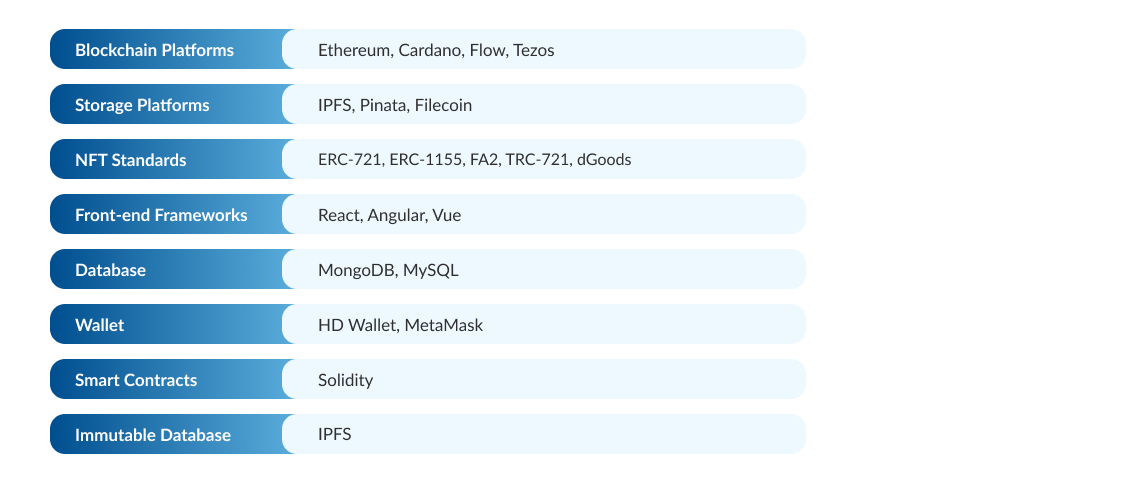
How Much Does It Cost to Create an NFT Marketplace?
The cost and duration depend on the performance of the marketplace. If you want to create a complex platform, you must invest more money developing the NFT art marketplace.
If you use a readymade solution, there is no assurance of security, and the product’s dependency will be on the platform from where you receive the key. However, the cost will be lower in this scenario.
On the other hand, you may hire a software development team to create a custom app for you. After all, the specialists will create a user flow, build the functionality, add features, and design the marketplace from the beginning. Hence, the price may increase a little more.

Final Thoughts
Since NFT’s popularity is growing day by day, this is high time to launch an NFT marketplace app. These marketplaces contain many excellent features. Turn to an experienced development team to do your project from scratch.
FAQs about NFT Marketplace Development
There are many popular NFT marketplaces where you can buy and sell digital art and other virtual collectibles. Some of them are OpenSea, Rarible, SuperRare, Foundation, Nifty Gateway, etc.
An NFT marketplace makes money by taking a commission on each sale made through the platform. When an artist or creator lists an NFT for sale on the marketplace, the platform takes a percentage of the sale as a fee.
In addition to commission fees, NFT marketplaces may also generate revenue through other means, such as: Listing fees, Premium features, Transaction fees, Secondary market sales, and etc.
The time to develop an NFT marketplace depends on many factors, like level of complexity, features, platforms, tech stack, etc. Keeping in mind these factors, it can take approximately 4–6 months.
